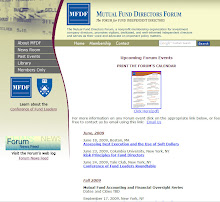Today, the Federal Reserve Board announced that it would purchase three-month unsecured and asset-backed commercial paper directly from issuers through the creation of the Commercial Paper Funding Facility (CPFF), a facility that will complement the Federal Reserve’s existing credit facilities to help provide liquidity to term funding markets. In its statement, the Fed reasons that the U.S. commercial paper market required backstopping because:
The Fed will effect purchases of commercial paper from U.S. issuers "through a special purpose vehicle (SPV) that will purchase three-month unsecured and asset-backed commercial paper directly from eligible issuers. The Federal Reserve will provide financing to the SPV under the CPFF and will be secured by all of the assets of the SPV and, in the case of commercial paper that is not asset-backed commercial paper, by the retention of up-front fees paid by the issuers or by other forms of security acceptable to the Federal Reserve in consultation with market participants."
The Fed's official statement announcing the Commercial Paper Funding Facility is available at: http://www.federalreserve.gov/newsevents/press/monetary/20081007c.htm
On a related note, yesterday, the Treasury Department posted three solicitations for financial agents to provide services for the implementation of the Troubled Asset Relief Program authorized under the Emergency Economic Stabilization Act of 2008. The deadline for submissions is 5 p.m. Eastern time on October 8. Treasury expects to announce the results of initial selections from these three solicitations next week.
In his FundLaw weblog, Stradley Ronon's John Baker points out a humorous, but potentially serious, flaw in the Treasury's solicitations for financial agents and the statute itself:
The commercial paper market has been under considerable strain in recent weeks as money market mutual funds and other investors, themselves often facing liquidity pressures, have become increasingly reluctant to purchase commercial paper, especially at longer-dated maturities.
By eliminating much of the risk that eligible issuers will not be able to repay investors by rolling over their maturing commercial paper obligations, this facility should encourage investors to once again engage in term lending in the commercial paper market.
The Treasury believes this facility is necessary to prevent substantial disruptions to the financial markets and the economy and will make a special deposit at the Federal Reserve Bank of New York in support of this facility.
The Fed will effect purchases of commercial paper from U.S. issuers "through a special purpose vehicle (SPV) that will purchase three-month unsecured and asset-backed commercial paper directly from eligible issuers. The Federal Reserve will provide financing to the SPV under the CPFF and will be secured by all of the assets of the SPV and, in the case of commercial paper that is not asset-backed commercial paper, by the retention of up-front fees paid by the issuers or by other forms of security acceptable to the Federal Reserve in consultation with market participants."
The Fed's official statement announcing the Commercial Paper Funding Facility is available at: http://www.federalreserve.gov/newsevents/press/monetary/20081007c.htm
On a related note, yesterday, the Treasury Department posted three solicitations for financial agents to provide services for the implementation of the Troubled Asset Relief Program authorized under the Emergency Economic Stabilization Act of 2008. The deadline for submissions is 5 p.m. Eastern time on October 8. Treasury expects to announce the results of initial selections from these three solicitations next week.
- Custodian, Accounting, Auction Management, and Other Infrastructure Services
- Securities Asset Management Services
- Whole Loan Asset Management Services
In his FundLaw weblog, Stradley Ronon's John Baker points out a humorous, but potentially serious, flaw in the Treasury's solicitations for financial agents and the statute itself:
The solicitations are consistently inconsistent on the key point of whether the second word in the Program's name is "Asset" or "Assets." Disturbingly, the inconsistency derives from the statute itself, which uses "Troubled Assets Relief Program" eight times and "Troubled Asset Relief Program" ten times. It's hard to see how a definitive resolution can be reached, short of additional legislative action.





